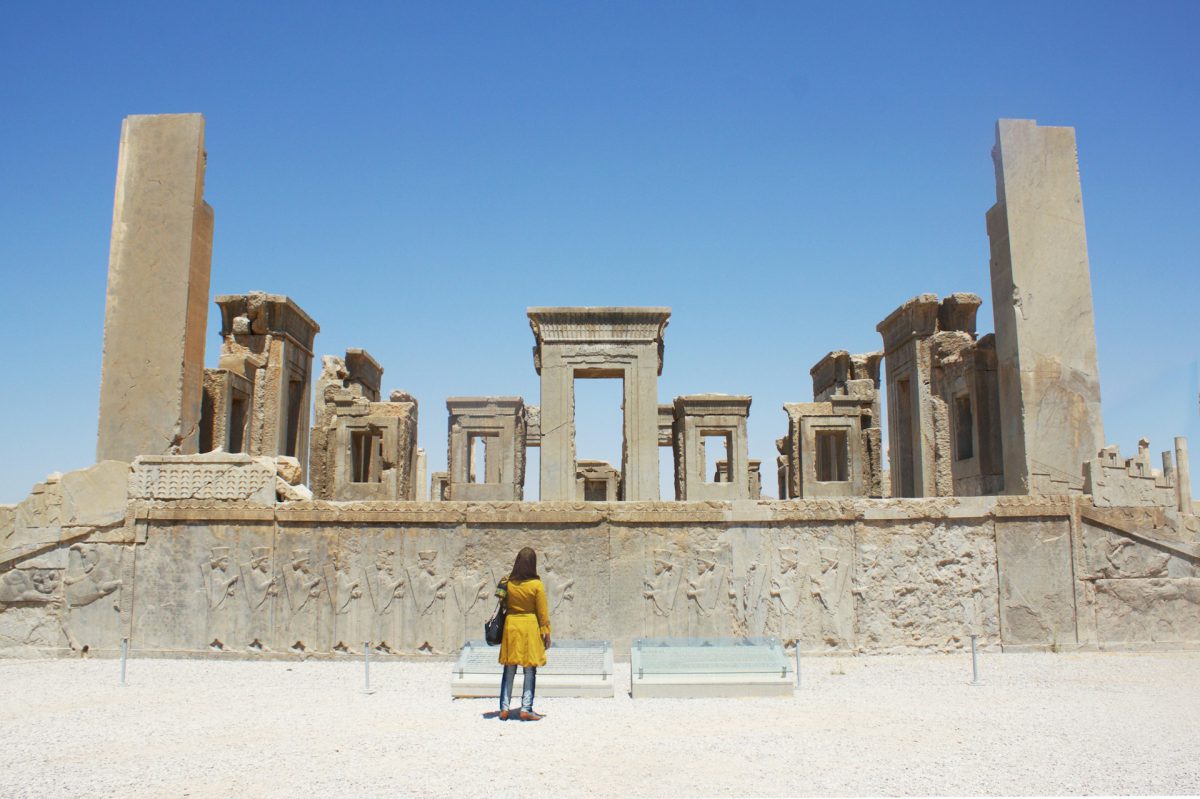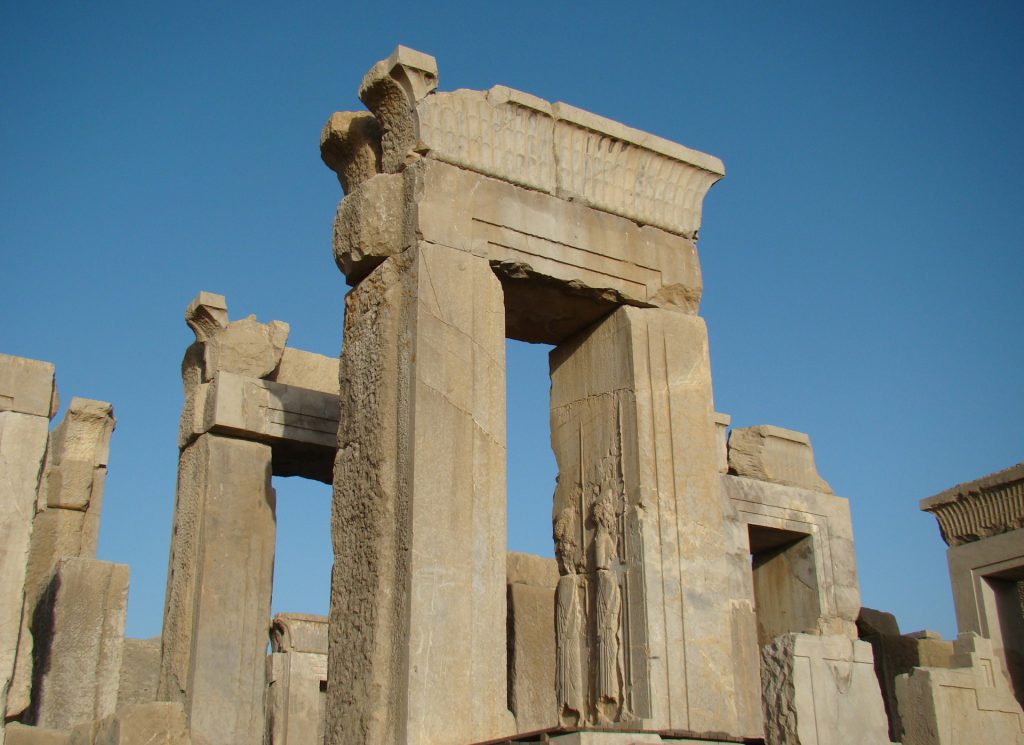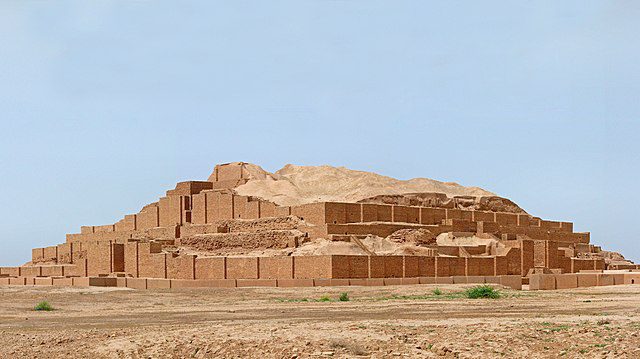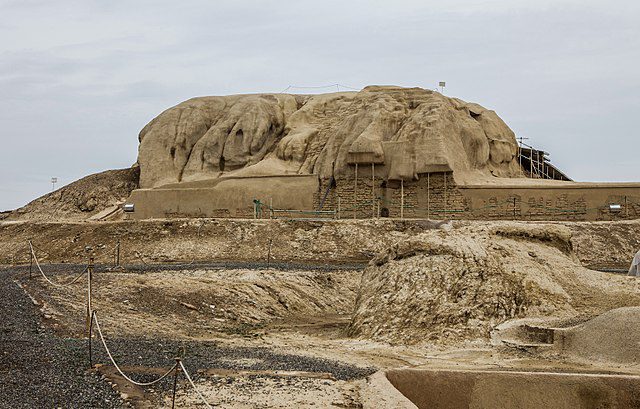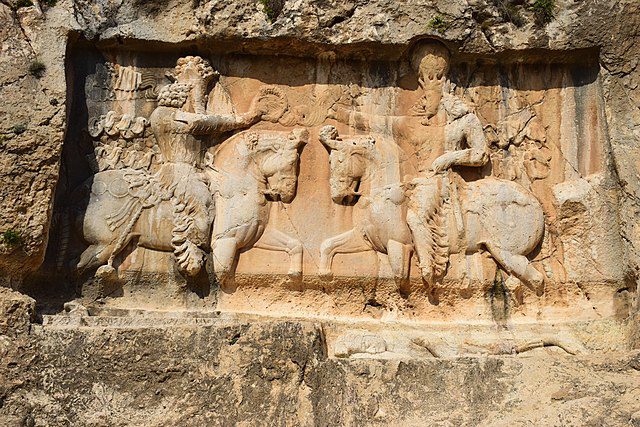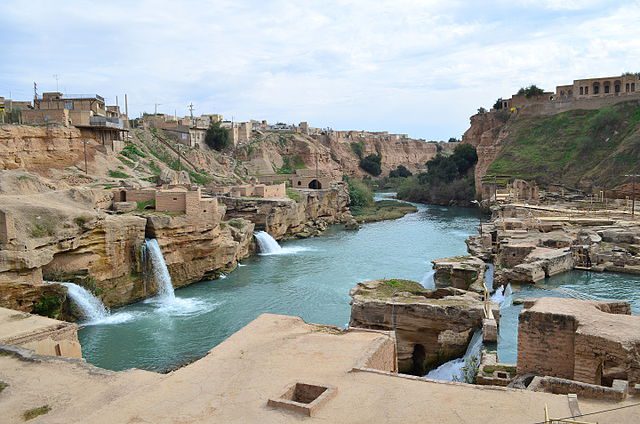Table of Contents
Step into the ancient past as we uncover the fascinating story behind places to go in Iran. A land steeped in history, Iran invites exploration of its remarkable archaeological sites, each a chapter in the country’s captivating tale.
Dating back to around 550 BC, Iran’s cultural roots run deep, with influences from diverse civilizations shaping its identity over centuries. The arrival of Muslim Arabs in the 7th century left a lasting impact, leaving behind a rich legacy that continues to define modern Iran.
Today, visitors are drawn to Iran’s archaeological sites, where the remnants of ancient cities and tombs offer glimpses into the country’s storied past. These sites stand as enduring reminders of the civilizations that once thrived in this remarkable land, inviting travelers to embark on a journey through time. Let’s explore top Iran places to go for those who are interested in history and archaeology:
Persepolis
Persepolis stands quietly among Iran tourist attractions and rugged landscape, a treasure trove of ancient history waiting to be explored. A visit to this UNESCO World Heritage Site reveals a fascinating journey through time, filled with questions and wonders. Walking through the remains of this once-majestic capital of the Achaemenid Empire, you can’t help but feel a deep respect for the kings and workers who built it under Darius I’s rule.
Darius I, a king known for his kindness to workers, commissioned Persepolis around 518 BC. Stories tell of how he treated his workers well, paying them fairly for their hard work. But what was Persepolis really for? Was it a place for special ceremonies, a symbol of power, or something else entirely? The secrets of this ancient city continue to intrigue visitors, prompting them to ponder its true purpose amidst the ruins.
However, Persepolis faced a sad fate when Alexander the Great invaded in 330 BC. He set fire to the city in a moment of recklessness, taking away its riches and leaving it in ruins. For centuries, Persepolis lay forgotten until a French archaeologist in the 1930s began to uncover its mysteries, breathing new life into its ancient stones.
Pasargadae
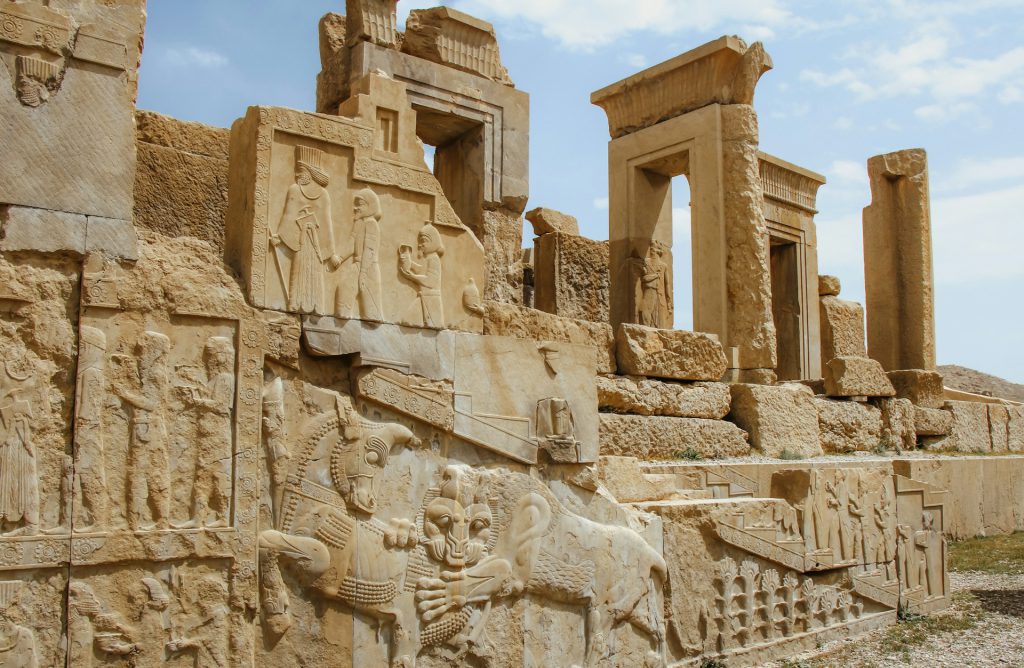
Located in modern-day Fars province, Iran, Pasargadae stands as a symbol of ancient Persian greatness. Founded by Cyrus the Great around 2,500 years ago, this city was the first capital of the Achaemenid Empire, where different cultures came together. Among top Iran tourist attractions, the buildings and gardens left behind reveal the early art and style of the Achaemenids, showing how creative they were. The tomb of Cyrus is especially impressive, decorated with beautiful designs that tell stories from ancient times.
Spread across 160 hectares, the archaeological site of Pasargadae holds many wonders. One of the most remarkable is the tomb made of limestone, where Cyrus was buried with riches. Tall-e Takht, a massive platform on a hill, also catches the eye, showing the strength of Achaemenid architecture. The royal gardens, divided into four parts, set a standard for design that influenced many others.
Pasargadae teaches us about the Achaemenid Empire’s rich history and how they celebrated different cultures. As the starting point for the grand cities like Persepolis, Pasargadae’s legacy lives on, reminding us of the ancient Persians’ creativity and openness to the world. It is the best place to visit in Iran if you are looking for ancient history.
Tomb of Cyrus the Great
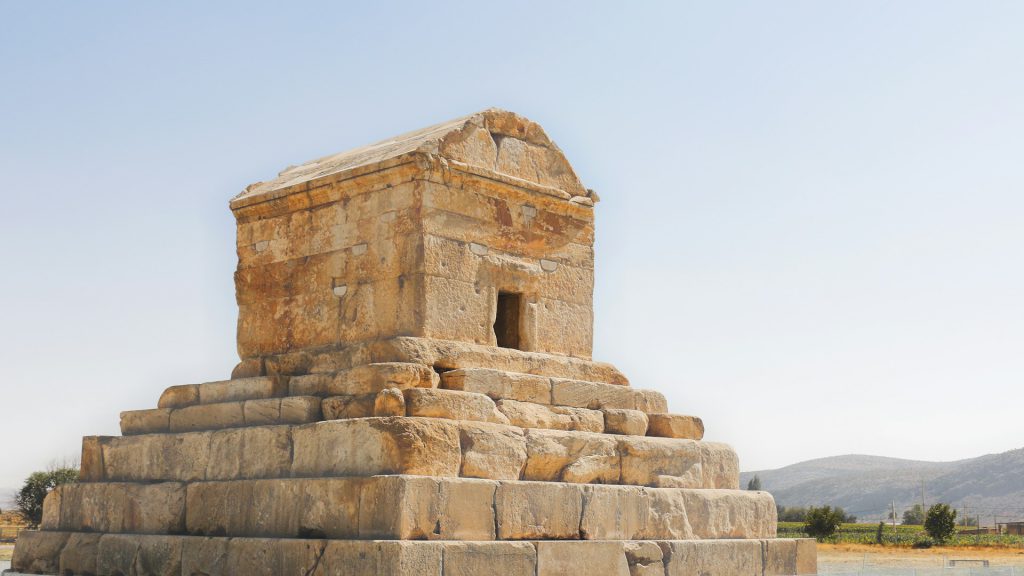
In the heart of Pasargadae, Iran, rests a remarkable testament to history — the Tomb of Cyrus the Great. Made of layered limestone, this ancient structure tells the story of a powerful leader from over 2,500 years ago. Dating back to the 6th century BC, it showcases the incredible skill of Persian builders.
As you explore Pasargadae’s historic streets, you’ll stumble upon this UNESCO-listed treasure of Iran. Once holding treasures fit for a king — like a golden coffin and lavish jewelry — today it stands simple yet majestic. Visitors are drawn to its quiet presence, entering the tomb chamber to witness its solemn beauty. The walls, made of white limestone, seem to whisper stories of a distant past. Each detail speaks of the enduring legacy of Cyrus the Great, leaving visitors in awe of the craftsmanship that has stood the test of time.
Naqsh-e Rostam
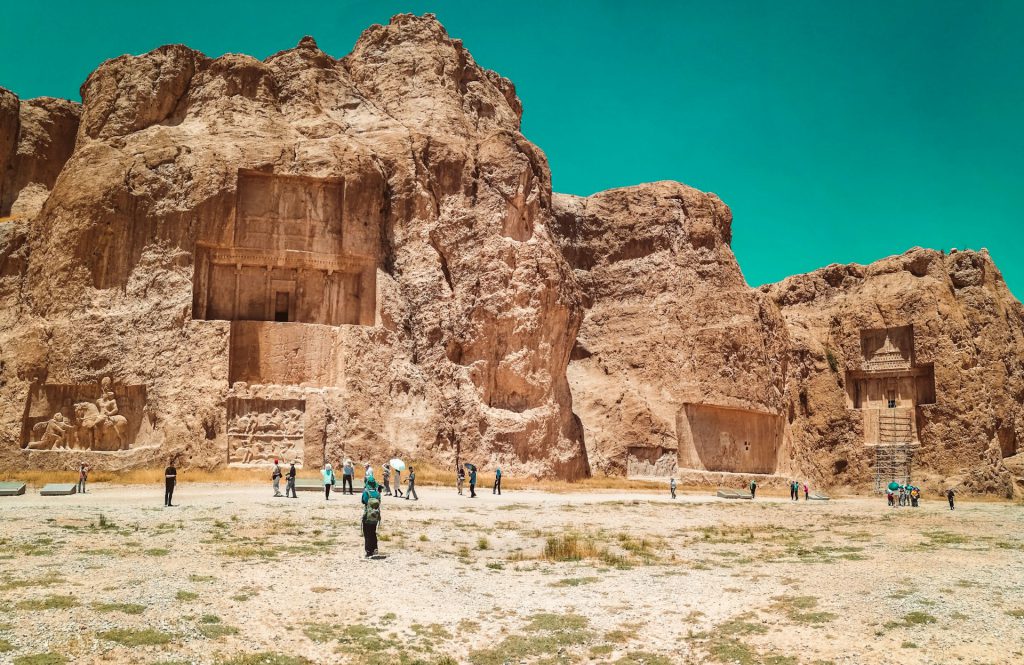
Just a short ride from Persepolis sits Naqsh-e Rostam, a special place where ancient Persian kings found their eternal resting spots carved right into the rock. It’s a must-see on your Iran trip, and for good reason – the sight of these massive tombs is simply breathtaking.
Who exactly lies inside these rock-cut graves is still a bit of a mystery. We know Darius I, the builder of Persepolis, is in one of them, but the others – Darius II, Artaxerxes I, and Xerxes I – are up for debate. The cliff faces surrounding the tombs tell stories of battles won and kings celebrated, giving us a peek into the past. But what’s even more fascinating is a really old carving that hints this place was important way before the Achaemenid Empire came along.
Naqsh-e Rostam in among the top Iran tourist attractions. It isn’t just a stop on your tour – it’s a journey through time, waiting for you to uncover its ancient wonders.
Tchogha Zanbil
Set amidst the desert expanse of modern-day Iran, Tchogha Zanbil offers a glimpse into the once-vibrant Elamite civilization. Founded around 1250 BC by King Untash-Napirisha, this ancient city, Dur Untash, flourished as the esteemed capital of the Elamite Kingdom. Yet, its heyday was fleeting, overshadowed by the unforgiving sweep of history. The solemn echoes of its abandonment in 640 BC, following the merciless Assyrian invasion, reverberate through the ruins, recounting stories of a bygone era.
At the core of Tchogha Zanbil lies its most striking feature – a majestic ziggurat reaching towards the sky with dignified grace. Once a humble sanctuary devoted to the Elamite deity Inshushinak, this architectural marvel evolved into the awe-inspiring edifice that commands attention today. Its splendor transcends time, bearing witness to the rituals and beliefs that once shaped the spiritual landscape of ancient Mesopotamia.
Yet, beyond the towering ziggurat, unfolds a panorama of ancient temples and regal palaces, beckoning visitors to delve into the opulent lifestyle of Elamite rulers and the rich cultural tapestry that defined their world. It is one of the best places to go in Iran.
Bisotun
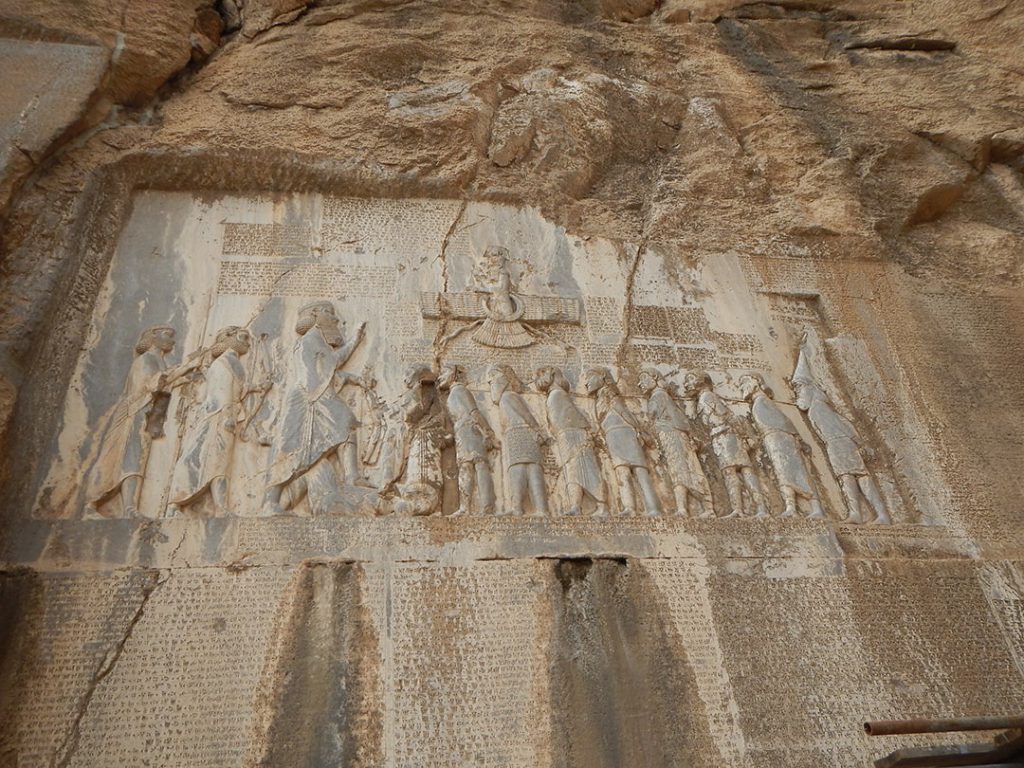
Located near Kermanshah, Iran, is the fascinating Bisotun Archaeological Site, a place bursting with ancient secrets. At its heart lies the incredible Behistun Inscription, carved into towering rocks, sharing the tales of Darius the Great in three old languages—Elamite, Babylonian, and Old Persian.
But Bisotun isn’t just about the inscription. It’s the best place to visit in Iran and a treasure trove of history, holding fragments from different times like pieces of a puzzle. Among them stands a strong statue of Heracles, and on the rocks, you’ll find stories etched by ancient hands. Recognized by UNESCO, Bisotun invites curious souls to explore Iran’s rich past.
Taq-e Bostan
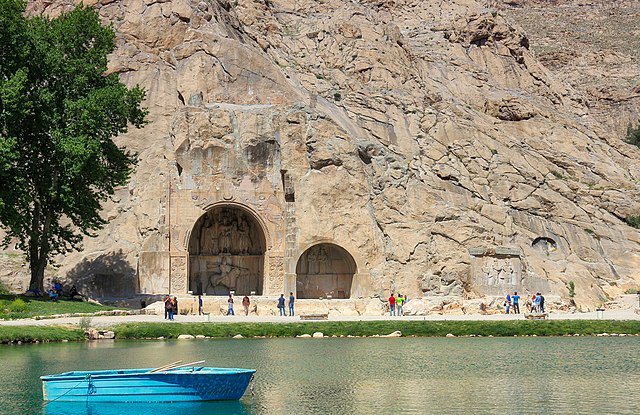
Taq-e Bostan historical site is located on a hillside with the same name and next to the fountain in the northeastern fringes of the city of Kermanshah. The complex is built in the third century AD and enjoys great artistic and historical value. It is one of the best Iran places to go.
Firstly, the Sassanid kings chose an area around the Persepolis for making their statues. The Ardeshir II and the kings after him chose Taq-e Bostan located on the Silk Road with natural lush and high water level.
There are some rock painting monuments such as the Artaxerxes II coronation and two arches in Taq-e Bostan. Shapour II and Shapour III have been depicted on smaller arch and Khosrow Parviz depicted on the larger one.
The pictures present the glory of Sassanid kings and also they associate the divine power of them. The petrograph including the statue of Mohammad Ali Mirza, son of Fath Ali Shah Qajar, with a Nastaliq inscription is carved in this complex. Some valuable information about Hijab, Religion and the importance of music at that time are seen among the inscriptions. A lake made of natural springs has been created under the arch in the area of Taq-e Bostan.
Tepe Sialk
In the heart of Iran, lies Tepe Sialk, a place where ancient stories come to life. Dating back around 6500-5500 years BC, this best place to visit in Iran was once home to a bustling community. They used tools made of stone and bone for their everyday tasks. Evidence suggests they had ties with the civilization of Shoosh (Susa), as they learned to write about 5,500 years ago. Clay slabs with ancient Elamite writing were found here, hinting at the birth of written language in this region.
Tepe Sialk has seen many civilizations come and go over thousands of years. The graves of Sialk V and Sialk VI hold a treasure trove of artifacts, like bronze weapons and beautiful jewelry. The ceramics found here, decorated with simple patterns, show similarities with items from other places. As we explore Tepe Sialk, we uncover stories of ancient people, their tools, and their way of life, echoing through time for us to discover. It is one of the top Iran places to go.
Tang-e Chogan
Located in Fars province, Tang-e Chogan unveils ancient stories through its six striking reliefs from the Sassanid Era. Near Bishapur, these relics stand tall, telling tales of kings long gone. Carved inscriptions dot the valley, sharing the rich history etched into the land.
As you wander through Chogan Valley, you’ll spot Sassanid kings carved into the rock, frozen in time. Shapour on his horse, wearing a crown, catches the eye, while an angel watches over. Around them, scenes show Shapour with soldiers, receiving gifts. Each carving tells of a time of wealth and power, preserving history in the heart of Fars province. It is among the top Iran tourist attractions.
Shushtar Historical Hydraulic System
Situated beside the Gerger River, the Shushtar Waterfalls, also known as the Shushtar Historical Hydraulic System, stand as a remarkable example of ancient Persian engineering and is one of must visit places in Iran. Recognized as a UNESCO World Heritage Site in 2009, this wonder dates back to Darius the Great’s time, featuring canals in the Karun River that still bring water to Shushtar through tunnels. The system includes Salasel Castle, a tower for measuring water levels, bridges, dams, mills, and basins, all showcasing its impressive design.
Built in 1233 AH to protect the Mizan Dam, these ancient waterfalls have endured the test of time, with later modifications ensuring their resilience. Despite modern changes like the Koohrang Tunnel and Shahid Abbaspour Dam altering water flow, the Shushtar Waterfalls remain captivating, attracting visitors with their timeless beauty and historical importance. As one of Shooshtar city’s cherished attractions, these cascading waters remind us of Iran’s rich heritage and its innovation in hydraulic engineering.
FAQs about Places to Go in Iran
Q1: What famous tourist attraction is found in Iran?
A1: When you visit Iran, make sure to check out these amazing places: Persepolis, Pasargadae, Nasir-ol-Molk Mosque, Naqsh-e-Rustam, Hafez Tomb, Eram Garden, Naqsh-e-Jahan Square, Sheik Lotfollah Mosque, Chehel Sotoun, Vank Cathedral, and Golestan Palace.
Q2: Is Iran a cheap country?
A2: Although Iran may not be as inexpensive as certain other Asian countries, it still offers great bang for your buck due to the amazing experiences it offers. By keeping track of your spending and budgeting wisely, you can have a rewarding trip without spending too much money.
Q3: What made Iran famous?
A3: Iran has a deep tradition of learning that has led to a diverse culture filled with art, literature, poetry, music, food, and architecture. Throughout history, Iranian scholars have penned significant works on philosophy and medicine. Additionally, it was an Iranian mathematician who first developed algebra.
Q4: Which country visits Iran the most?
A4: Iraq, Azerbaijan, and several European countries contributed the most passengers entering Iran.
Q5: How old is Iran?
A5: Iran is among the oldest civilizations globally, tracing back to the Elamites in the fourth millennium BC. The Medes first unified it in the seventh century BC, and it reached its peak in the sixth century BC under Cyrus the Great, who established the Achaemenid Empire, one of the most extensive empires of ancient times.
Last Words: Discover Places to Go in Iran with a Customized Tour
Discover places to go in Iran through its old sites. They tell stories from around 550 BC, showing how different groups influenced Iran. The arrival of Muslim Arabs in the 7th century also changed Iran. Today, tourists visit these sites to see old cities and tombs, get a peek into Iran’s past. These places are like time machines, taking travelers on a journey through history.
When you’re planning a trip to Iran, you want it to be just right. That’s why going for customized tours is a smart move. At To Iran Tour, we’re experts at creating travel experiences that are tailor-made for you. Our team works hard to plan every detail of your trip, taking into account what you love, your budget, and how you like to travel.
Let To Iran Tour be your guide as you explore this incredible country. Together, we’ll create memories that you’ll cherish forever.

